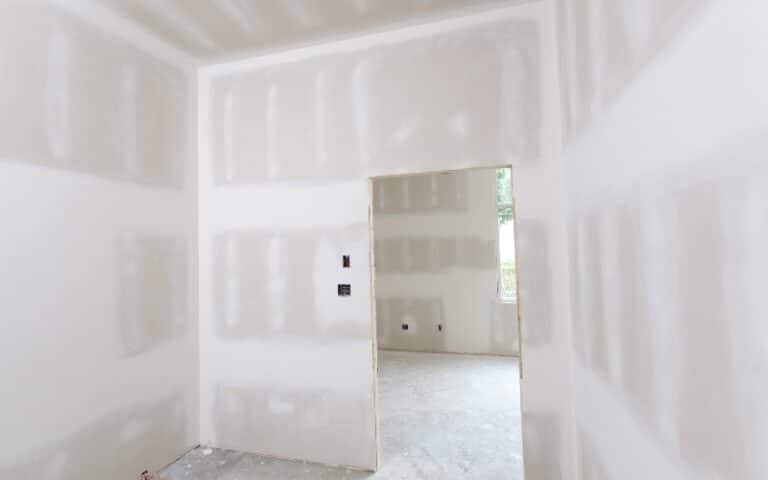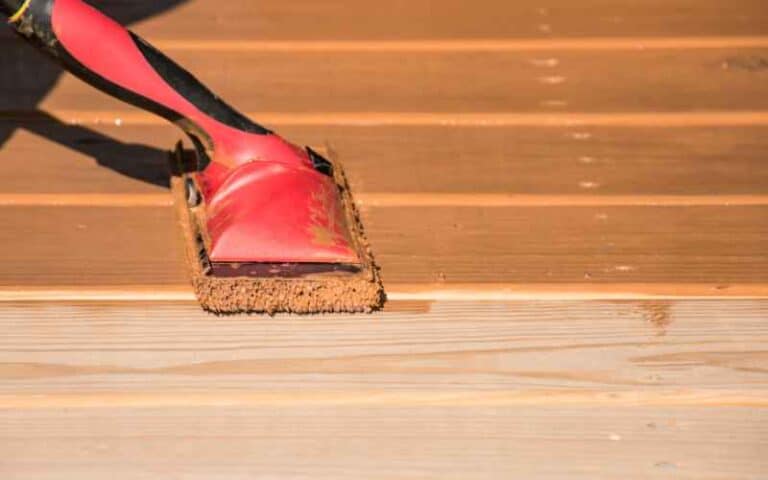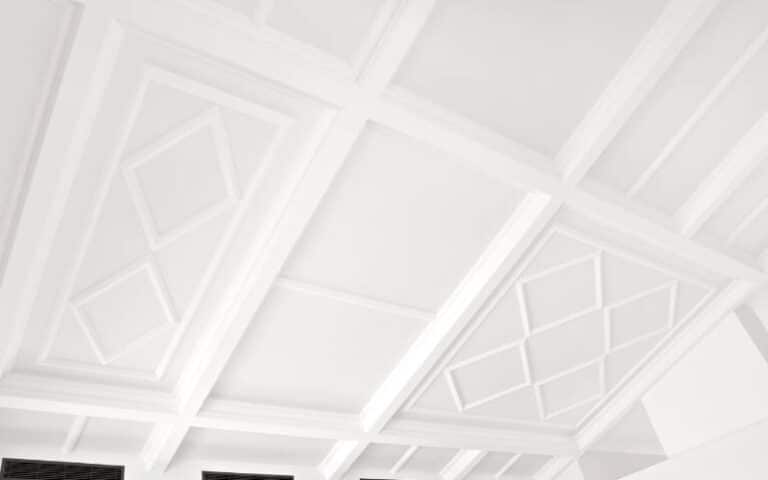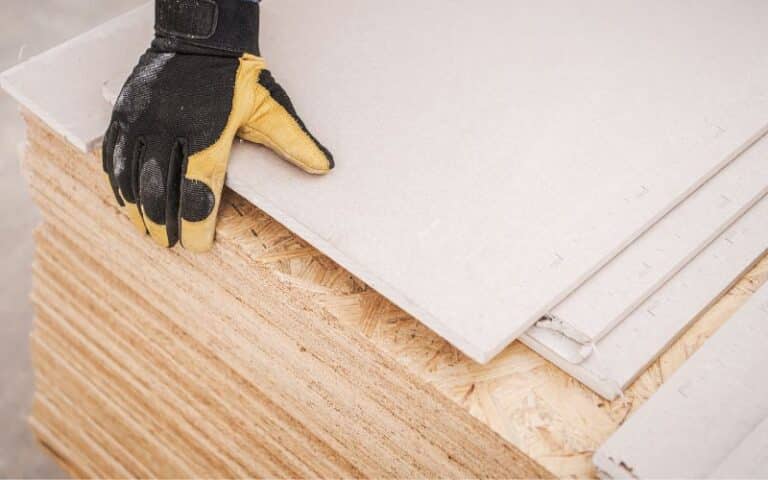Drywall is the best option if you’re looking for a multipurpose construction material that you can use to build walls and ceilings and only needs minor repairs in case of any damage.
Most stores, residences, offices, and every structure with architectural aspects use it. Drywall may come in sizes that don’t fit your needs, so you must trim it.
Curved knives are typically used for this; most people don’t know why. Find out here why drywall knives are curved.
The blade on drywall knives is curved inward toward the tip, making the knife ideal for cutting inside and around corners. It can cut around corners and other obstructions with ease because of this design. Drywall is soft and simple to cut, but you can easily damage it using the wrong tool.
In this article, I’ll discuss the best drywall-cutting tools, why they’re the best, and what factors to consider when selecting one knife.
Ready for a Drywall Quiz?
Why Are All Drywall Knives Curved?

Curved drywall knives make cutting through corners on a drywall sheet easier. Some people refer to curved knives as putty or utility knives.
A drywall knife is a tool for cutting and scoring drywall. Stainless or carbon steel is mostly used for making the knife blade.
Knives made specifically for cutting through drywall always have a sharp blade. The three significant varieties of drywall knives are tapering, straight, and curved knives.
- Straight knives are straight throughout. They are more effective at creating long and straight cuts. You can also call it a scoring knife.
- The most helpful kind of drywall knife is the tapering knife. You can use it on drywall sheets for tapering and finishing.
Can Flat Knives Cut Drywall?
Using flat knives to cut drywall because you will not get the desired result. Chef’s knives are comparable to flat knives, which are mainly used for slicing, chopping, and dicing.
For this reason, it will be improper to use a flat knife to cut through drywall.
Can You Cut Drywall With Any Knife?
Using only the specified tools to cut drywall is best, so you don’t injure yourself. There can be a lot of consequences when you don’t use the right tools.
Below is a table showing the effects of using the wrong tools to cut drywall.
| The Effects | Description |
|---|---|
| Lack of productivity | Using the wrong tool to cut drywall can lead to missed deadlines and lost labor hours. |
| Safety | There’s always a possibility of suffering an injury when using the wrong tool. |
| Cost | The appropriate instrument for cutting the drywall will cost more money. |
| Damages | Using the incorrect tool puts the drywall sheet you are at risk of spoiling. |
Best Tool for Cutting Drywall
Different kinds of drywall-cutting tools are available, each with a different function set. Specific instruments are necessary whether working with old or new drywall.
Drywall-cutting tools are available to suit every demand, regardless of how complex or easy the work is. It can be challenging if you need the appropriate equipment.
There’s the power tool or hand tool. Below is a list of some tools for cutting drywall.
#1. Utility Knife
The utility knife is a hand or manual piece of equipment with a blade. To use this knife,
- Run the knife through the drywall sheet to cut it.
- After that, use your hands to snap the board from the back.
- Once you do this, take the knife and cut the part of the still attached sheet, and that’s all.
This knife is best for trimming drywall sheets to the desired length or breadth. The only disadvantage is that you can’t use this knife to cut holes or curved shapes in drywall sheets.
#2. Keyhole Saw
A keyhole saw is another hand tool that you can use to cut drywall. This tool is a saw with a long blade for making little holes in drywall.
Because of their shape and sharp teeth, you can easily push them into drywall to cut through.
They work well to create holes in walls for electrical wiring and lighting. For larger holes, it is better to use a power tool.
#3. Hole Saw
It is difficult to match the precision of a Hole Saw when cutting round holes in a drywall sheet.
These instruments fit snugly into the drill’s chuck and have circular blades with tiny teeth that can cut drywall sheets.
Other models of the Hole Saw have two movable blades and a drill bit in the center.
#4. Oscillating Multi-Tool
Power tools with interchangeable flat or hooked blades that oscillate are known as oscillating multi-tools. This tool might be small in size, but it is very effective.
They are quite safe to operate, and they can make precise cuts for what you want to do. It completes the task when other tools are unable to.
Although it generates much dust, it will cut drywall sheets to your desired length or breadth.
#5. Rotary Tool
This tool is one of the best for cutting holes, arcs, and curves from a drywall sheet. The rotary tool is a compact, powerful tool nearly identical to drills.
Rotary tools are one of the easiest to use on drywall; they work quickly and make precise cuts. That’s the reason why expert drywall installers prefer to use them.
#6. The Dust Collecting Track Saw
Without a doubt, this specialized tool isn’t suitable for everyone or every project. You can use this, for instance, if you need to cut a string of equal pieces of drywall sheets at once.
Using a regular circular saw to cut drywall will generate a lot of dust, but a track saw’s dust collection mechanism effectively reduces the dust and enables precise cuts.
This tool will save time, but it is uncommon among drywall experts.
It is not only essential to know the best tools for cutting drywall, but it is also important to know the right tool to use for every specific work.
Here’s what you should know when choosing your tools for drywall jobs.
#7. Manual (Hand) Tools or Power Tools
Both have their importance. Hand tools are quiet but require a lot of time and effort, while power tools are more efficient but noisy and generate dust when you use them.
The general nature of the work and the level of cutting power you’ll need are important to consider.
If the work needs precise cuts and will consume a lot of time, then a power tool will be better. A hand tool, however, can be a simpler choice if the work is less.
#8. Dust Management
Several tools have functions that make it easier to manage the quantity of dust created when cutting drywall.
Some drywall-cutting tools have features that keep dust from entering and affecting the equipment.
When cutting several drywall sheets, it is best to use this kind of equipment.
#9. Effectiveness
The blade of a drywall cutting tool must be sharp to be efficient and work properly. Regardless of the tool you choose, it won’t cut through properly if the blade is not sharp.
You also have to choose your tool according to your work. For example, you should only use the rotary tool when you want to cut round holes or make arcs in the drywall sheet.
Using the rotary tool to make long, straight cuts will only damage the drywall.






